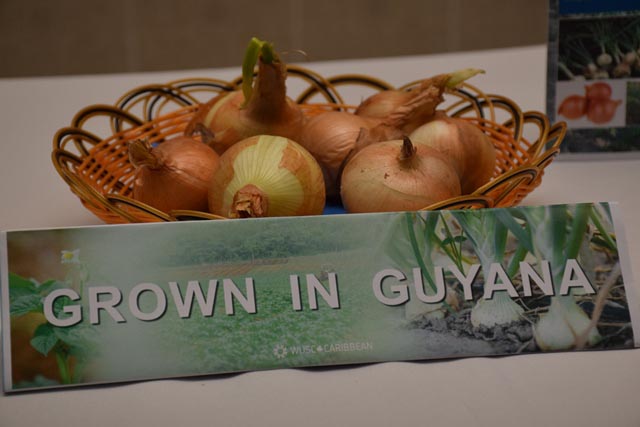Following onion trials by small farmers, large-scale production of the commodity in Guyana has been deemed feasible, the Department of Public Information (DPI) reported on Saturday.
DPI said the prognosis was delivered after partnering agencies, the National Agricultural Research and Extension Institute (NAREI) and the World University Service of Canada (WUSC) conducted pilot projects in several parts of Guyana.
The project was carried out in Regions Two, Three, Four, Five, Six and Ten.
Presentations highlighting the findings of the trial were made on Friday by NAREI’s Chief Executive Officer, Dr. Oudho Homenauth, Research Scientist, Tracy Persaud and PROPEL Agronomist, Joanna Robertson.
DPI said that the trials were done along the Mahaica River, Kara-Kara, Amelia’s Ward, Affiance, Parika, Hopetown and Benab among other places.
In her review of the project, DPI said that PROPEL Agronomist, Joanna Robertson noted that, “It is our hope to increase onion production in Guyana over a period of years…The long-term effect would be for us to gradually reduce the amounts of imports of onions in due time as production increases.”
According to statistics presented, Guyana’s annual consumption of onions is recorded at approximately 3,987 metric tonnes, costing the country a fresh market expenditure of US$1,459,765.
According to DPI, the varieties used for the trials were the Red Creole, Mercedes and Texas Early Grano.
The Mercedes was identified as being most suitable for large scale cultivation here. This variety along with the others was cultivated during three seasons of the year. DPI reported that the Mercedes variety yielded 56,444 kilogrammes per hectare (kg/ha) when its actual yield potential is 57,500 kg/ha.
Other findings during trials were that the onions which were cultivated have a longer (unrefrigerated) shelf-life of 80 – 100 days and that seedlings which were grown under shaded conditions required special attention.
Other findings included that heavy rainfall after transplanting could lead to more than 90 percent mortality, pests and diseases were almost non-existent under shaded conditions, fertilizers should be applied at or near the surface because of the shallow root system and in most cases, frequent irrigation can increase bulb size of the onion.
One farmer, Dexter Sultan, said that he has seen the results of the onion cultivation in other fields.
However, in his trial plot at Sandvoort, West Canje, Berbice, Region Six, some of his seedlings died while others plants were spoilt.
NAREI has been working with the WUSC through a Canadian Funded project to conduct onion and potato cultivation trials here.







